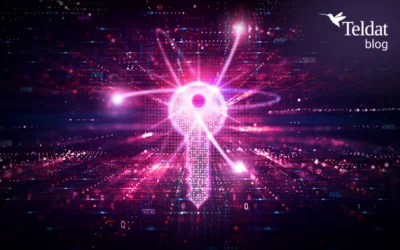 What does multimedia streaming means?
What does multimedia streaming means?
Multimedia streaming is increasingly present in our lives. Streaming allows a user to view or listen, to this content without previously downloading it. A user connects to the server which in turn sends the multimedia content. What however, makes this possible?
The ‘Multicast’ Concept’
There are a series of mechanisms that can send multimedia content from a server to a client but clearly the most important and efficient is the multicast mechanism.
- Unicast: each client requiring multimedia content needs an individual data flow.
- Broadcast: multimedia content is sent to all the network clients independently of whether they want it or not.
- Multicast: this only requires a minimum bandwidth as only those clients wanting the multimedia content receive the data flow.
The main advantage of multicast mechanisms versus other possibilities is real time transmission for multiple clients. By using multicast mechanism in these cases, you save an enormous amount of network resources and additionally improve the multicast content transmission.
‘Multicast Group’ Concept
A group of clients request a specific data flow. The group has no physical or geographical limits and only those clients interested in the multimedia content specifically join the said group through IGMP messages. To identify this client group, a multicast address is used.
Multicast Addressing
A multicast address is associated to a group of clients specifying an interest in receiving a multimedia content dataflow. Addresses run from 224.0.0.0 to 239.255.255.255 and are known as a Class D range.
The server sends a single datagram to the multicast address. The router consequently makes copies and sends them to the clients requesting this data from the said server.
Main IPv4 Multicast Routing Protocols
Local network multimedia content distribution is controlled by IGMP (Internet Group Management Protocol), and is used within the routing domain PIM (Protocol Independent Multicast).
IGMP: IGMP is a protocol used by both the clients and multicast routers to identify the multicast group members.
- Clients specify they belong to a group by sending an IGMP message to their nearest router.
- The routers listen to these IGMP messages and periodically ‘discover’ the active or inactive multicast groups in the subnet.
PIM: PIM is a family of multicast routing protocols that operate based on traditional algorithm routing information, independently of the one being used. PIM creates a series of distribution trees from the servers to the receivers, using the topology information it receives.
There are four `PIM variants: PIM Sparse Mode, PIM Dense Mode, Bidirectional PIM and PIM Source-Specific Multicast. This article concentrates on the most commonly deployed variant: PIM SparseMode.
PIM Sparse Mode (PIM-SM)
PIM Sparse Mode is a protocol for efficiently routing IP packets to multicast groups that may span wide area (WAN) and interdomain networks. The protocol is named ‘sparse-mode’ because it is suitable for groups where a very low percentage of the nodes subscribe to the multicast session.
PIM sends multicast traffic from a source server to all clients who wish to receive this traffic, creating a distribution tree and routing the traffic over essential interfaces only. For each node making up part of the tree there is a single interface towards the root and one or various interfaces towards the clients.
PIM-SM has two types of distribution trees:
- Shared tree: traffic source is a Rendezvous-Point (RP) node, which concentrates all traffic destined to the same multicast group regardless of which server sourced the traffic.
- Shortest Path Tree (SPT): the tree has a single multicast server as source and destination is a specific multicast group. The traffic doesn’t go through any node where traffic is concentrated and always creates the shortest path between the server and clients.
PIM-SM: Advantages
PIM-SM was originally developed to avoid problems occurring with other multicast routing protocols, which failed when applied to wide area (WAN) or sparse areas with few clients, it also ensures the information flows just once over the server to client path and is only sent to clients wanting this information.
PIM-SM: Drawbacks
As already said, PIM-SM does avoid the problems other multicast routing protocols have; however it can give rise to congestion problems in the network due to traffic concentration in the shared trees, which may lead to packet loss.
Both the PIM Sparse Mode and IGMP are included in Teldat routers, as a result our devices provide the best answer to multimedia content routing today.



























